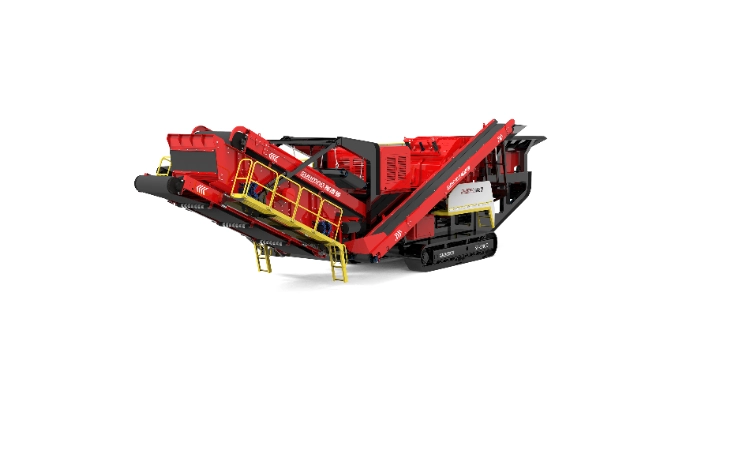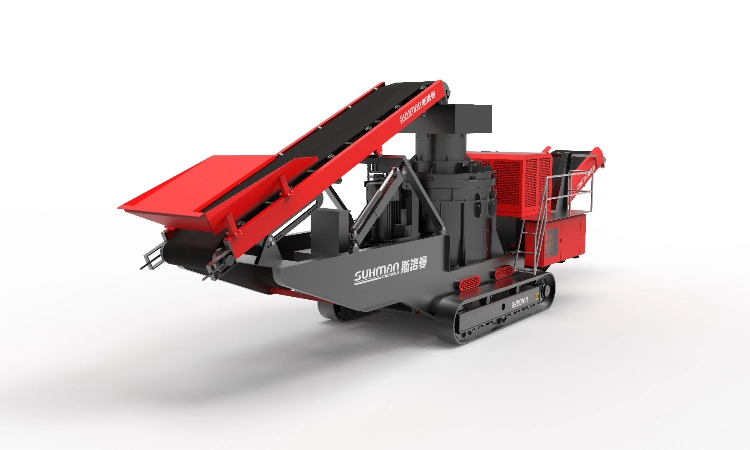Crawler Type Mobile Impact Crusher vs. Stationary Crusher: Which One Suits You Best?
Release time: 2025-03-07
Crawler Type Mobile Impact Crusher vs. Stationary Crusher: Which One Suits You Best?
When it comes to crushing equipment, the decision between a Crawler Type Mobile Impact Crusher and a traditional stationary crusher can make or break your project’s efficiency and profitability. Whether you’re working in construction, mining, or recycling, each type offers unique advantages tailored to specific needs. In this in-depth guide, we’ll break down the key differences—mobility, cost, performance, and application suitability—so you can choose the option that aligns perfectly with your goals. Let’s dive into the details and explore real-world scenarios to help you decide.
Table of Contents
- Overview of the Two Types
- Mobility and Deployment
- Cost Analysis
- Performance and Efficiency
- Application Scenarios
- Comparison Table
- Frequently Asked Questions
- Final Thoughts
Overview of the Two Types
A Crawler Type Mobile Impact Crusher Produced in China is a versatile, track-mounted machine designed for portability and flexibility. It’s built to move across challenging terrains and process materials directly at the job site. On the other hand, a stationary crusher is a fixed installation, typically larger and more powerful, intended for long-term, high-volume operations. Both are essential tools in industries like quarrying and demolition, but their differences in design and function cater to distinct operational demands.
Mobility and Deployment
The standout feature of a Crawler Type Mobile Impact Crusher is its mobility. Thanks to its crawler tracks, it can navigate rocky, uneven ground with ease, making it a go-to choice for projects that span multiple locations or require on-site processing. Imagine a road construction crew needing to crush gravel at various points along a highway—hauling materials to a distant plant isn’t practical. A mobile crusher can simply roll up to the site and get to work.
Stationary crushers, however, are rooted in one spot. They’re perfect for operations like a limestone quarry where the material source stays consistent for years. Setting one up involves pouring concrete foundations and wiring power supplies, which takes time and planning. If your project doesn’t demand relocation, this stability can be a major advantage, but it lacks the adaptability of a mobile unit.
Cost Analysis
Let’s talk money—because it’s often the deciding factor. Stationary crushers usually have a lower upfront cost than their mobile counterparts. You’re paying for the machine itself, but installation adds extra expenses: think foundation work, electrical setup, and possibly even permits. Over time, though, these costs can level out if you’re running a high-output operation with steady material flow.
A Crawler Type Mobile Impact Crusher comes with a higher initial price tag due to its advanced engineering and mobility features. However, it saves you in other areas—no need for a permanent base, less transportation of materials, and the ability to redeploy it across multiple projects. For short-term jobs, renting a mobile unit like the Mobile Impact Crusher Plus with Higher Stone Output can be a budget-friendly alternative, offering flexibility without a long-term commitment.
Performance and Efficiency
When it comes to raw power, stationary crushers often take the lead. Their size and fixed setup allow them to process massive volumes of material—think hundreds of tons per hour in a large mining operation. Maintenance is also simpler, as they stay in one place with easy access to technicians and spare parts.
But don’t underestimate mobile crushers. Modern designs, such as the Efficient and Multifunctional Modular Cone Crusher, pack impressive performance into a portable package. They excel at handling mid-sized loads and are particularly efficient for on-site recycling, like turning demolished concrete into usable aggregate. The trade-off? Their capacity might not match a stationary giant, but their ability to work where the material is can boost overall project efficiency.
Application Scenarios
So, which crusher fits your project? Here’s where each shines:
- Stationary Crushers:
- Large-Scale Quarries: Perfect for processing steady streams of rock over years.
- Mining Operations: High throughput for ore crushing in fixed plants.
- Aggregate Production: Ideal for consistent output of specific sizes.
- Crawler Type Mobile Impact Crushers:
- Construction Sites: Great for urban projects with tight spaces or shifting needs.
- Demolition Work: On-site recycling of debris into reusable material.
- Short-Term Projects: Flexible deployment without long-term investment.
For instance, during a recent urban redevelopment in Shanghai, contractors used a mobile crusher to process concrete rubble right on-site, cutting transport costs by 30%. Meanwhile, a stationary crusher at a rural quarry kept churning out gravel for a decade without needing to budge.
Comparison Table
Here’s a quick side-by-side look at the two options:
| Aspect | Crawler Type Mobile Impact Crusher | Stationary Crusher |
|---|---|---|
| Mobility | High – moves easily across sites | None – fixed in place |
| Initial Cost | Higher due to mobility features | Lower, but setup adds expense |
| Setup Time | Fast – ready in hours | Slow – days or weeks |
| Capacity | Moderate to high | Very high |
| Best Use | Flexible, short-term, on-site work | Long-term, high-volume production |
Frequently Asked Questions
Q: Can a mobile crusher match a stationary one in output?
A: Not always, but models like the Mobile Impact Crusher Plus with Higher Stone Output are closing the gap. They’re ideal for mid-to-large jobs where mobility matters more than max capacity.
Q: Is renting a mobile crusher worth it?
A: Absolutely, for temporary projects. It cuts upfront costs and lets you scale equipment to the job. Buying makes sense if you’ll use it long-term.
Q: How tough is maintenance on a mobile crusher?
A: It can be trickier due to constant movement, but modular designs like the Efficient Mini Modular Jaw Crusher simplify repairs and keep downtime low.
Final Thoughts
Choosing between a Crawler Type Mobile Impact Crusher and a stationary crusher isn’t a one-size-fits-all decision. If your work demands flexibility—think shifting sites or on-the-spot recycling—the mobile option is hard to beat. But for sheer power and long-haul reliability, a stationary crusher might be your best bet. Weigh your project’s scope, budget, and timeline, and you’ll find the perfect fit.
Ready to explore your options? Check out the innovative lineup at Suhman Crusher, including the top-tier Crawler Type Mobile Impact Crusher Produced in China.








